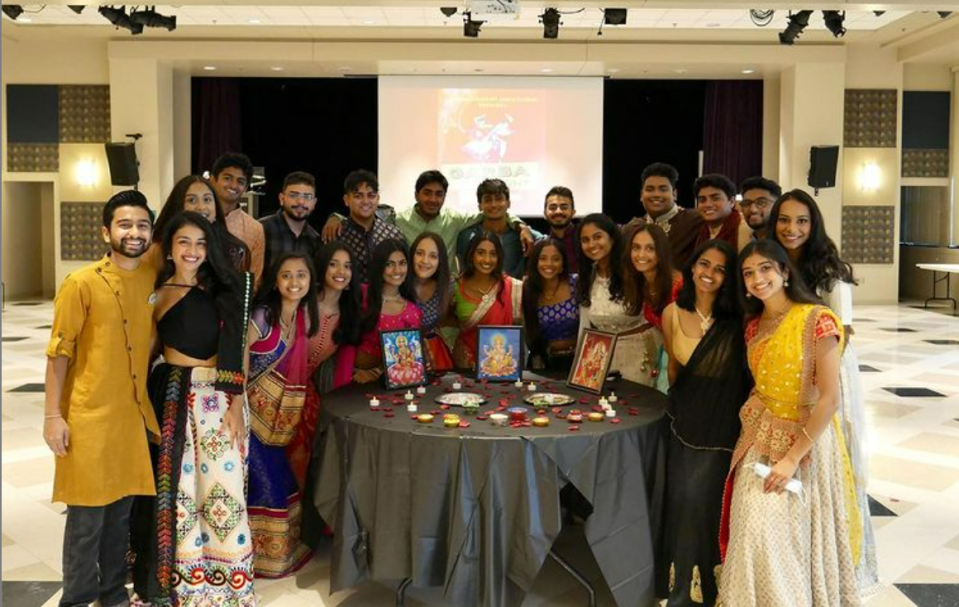Indian students now outnumber their Chinese classmates at Indiana University. Here's why.

The makeup of Indiana University’s international student population is changing, as Indian students now outnumber their undergraduate classmates coming from China.
A traditionally strong source of international scholars at IU, China started to send fewer students in the last five years. According to the results of the most recent IU student census, rising numbers of Indian students mean China lost its top spot at IU.
More: Indiana University census shows more students in Bloomington, fewer on regional campuses
“This is the first year we've seen that flip where India has become the top sending country and China is now the second,” said Rachel Salinas, director of international admissions at Indiana University Bloomington. “Not only at IU Bloomington. That's actually system wide.”
Increasing enrollment from India
At IU Bloomington, there were 1,117 students from India in the fall of 2020. That number soared to 1,637 this fall. The number of Chinese students fell from 1,803 in fall 2020 to 1,464 this fall semester.
System-wide, India also overtook China as the most represented country at IU. In fall 2020, there were 1,777 Indian students across all IU campuses. The university-wide total rose to 2,367 Indian students this fall.
University wide, the number of Chinese students fell from 2,086 in fall 2020 to 1,713 students in fall 2021.
While these numbers represent a shift, they are not surprising to IU leadership or international students themselves. Salinas said the flip in the 2021-22 academic year represents a continuing trend. “We've continued to see the decline in our Chinese applicants at the undergraduate level for the past five years or so,” said Salinas.
What's driving the shift in Chinese enrollment?
Wendy Qian is president of MUSINA Chinese Music Performance and Dissemination Association at IU Bloomington. In the course of recruiting potential members for her organization, Qian got a sense of the number of Chinese students on the Bloomington campus.

Now a senior at IU, Qian has seen the changes. "I've definitely noticed a trend that the number of Chinese people has been down since the year I came,” Qian said.
IU’s Interim Associate Vice President for International Services John Wilkerson confirmed to The Herald-Times a significant increase in interest in enrollment from India amid reduced interest from China. He explained that these trends are not unique to IU.
“Those are national trends,” Wilkerson said. “What we were seeing in the enrollment cycle is very much in keeping with our peer institutions nationwide, and shifting international student mobility globally.”
There are likely multiple factors driving these trends and changes. According to Wilkerson, China saw “exponential” growth in the number of students going abroad for higher education in a short period. As many students went abroad, Chinese leaders sought to improve universities domestically.
“China was incredibly transparent about their goals, in shoring up infrastructure in tertiary education,” Wilkerson said. “They've had several national plans that were very clearly geared toward expanding not only capacity in their universities, but also quality.”
Wilkerson said he thinks Chinese leadership hopes to increase the prestige of their universities to become a higher education destination themselves.
“Their ultimate goal has always been to become first a regional destination for international students and ultimately, a local destination.”
Chinese investments in higher education have paid off, according to IU student Zirui Sun. "In my opinion, recently and especially in the past decade, China's getting better and better, especially for its economy and education," he said. "The international rankings of many Chinese universities are going up."
With the improvement of schools in China, Zirui Sun said many families are choosing to send their kids to domestic universities. Cost is one factor. Many Chinese families cannot afford to pay for international student tuition and housing at IU or other American schools. But economics are not the only factor keeping students in China.
Qian said Chinese businesses still value those with degrees from the U.S. and Europe, as Chinese culture values ranking and prestige. With the rapid growth of local markets and companies, however, many companies want more employees who are familiar with Chinese consumers and workplace culture.
"Their market is kind of local," Qian said. "So, they want local people who know the market, who know the user, to really develop the product. If students are spending six years overseas, they're not going to know the culture and the current market trends as well."
According to Qian, some Chinese parents hear about unsafe conditions in the U.S., including recent protests and the prevalence of gun violence, and have second thoughts about sending their children to U.S. colleges. A friend of Qian's from China started looking at universities in Europe after her parents dissuaded her from applying to American institutions.
As China increased internal investments in higher education, a move Wilkerson said was designed to retain domestic talent and attract external talent, geopolitical tensions between China and the U.S. worsened. As a result, pre-existing trends likely accelerated. But IU and other institutions expected the shift.
“There's kind of been this perfect storm that probably has accelerated the shift in China, but it's been expected for years,” Wilkerson said. “To that end, IU has been preparing for at least six years for that shift in China and we've invested quite a bit in geo diversifying our international student population, so that we would be able to maintain a global presence that wasn't so reliant on one country or another.”
Salinas said Wilkerson was key to recognizing that IU would need to look beyond a reliance on Chinese students. “When he started he was very much of the mindset of, ‘OK, the majority of our students are from China; this isn't going to last forever.’"
Kelley School, IUB offer plenty for Indian students
According to Salinas, IU's Bloomington campus is attractive to Indian students, the majority of whom apply to the Kelley School of Business.
"We do know that we're very likely going to see an increase in students from India wanting to study abroad, wanting to study in the U.S., and I think we're positioned really well to attract those students," Salinas said.
Kelley School student Mira Venkatakrishnan has witnessed a significant increase in the number of Indian students on campus. She thought Indian students were drawn by the reputation of the Kelley School. “Many Indian students come from families that operate a family business and hence want to be equipped with skills to eventually continue that legacy or break new ground in America as a first-generation immigrant.”
"Indian students, in my opinion, have always enjoyed the American education system," said IU student Sankalp Sharma. He said many Indians are intrigued by methods favored in the U.S., including focusing on practical education with real world applications, compared to what some see as a more textbook and reading focused Indian education system.

Sharma said Indian students hear good things about IU from each other, fueling further applications. "They talk about positive experiences, which motivates future students to come (to IU)," Sharma said. "Pairing that with the work of the IU India Gateway office, conducting events and alumni meet ups across the Indian subcontinent, it makes IU extremely visible to the Indian youth."
IU senior Iswerya Ajay thought the increase in the number of students from India might be due to IU's increasing global recognition. She also thought positive word-of-mouth advertising has driven more students to IU.

"From my personal experience, I have heard students come because they have upperclassmen already at IU who rave about the wonders of IU, and others who found IU themselves and looked at images of IU or the admission process and wanted to come due to that," Ajay explained. "The reasons really do tend to vary from student to student, but IU increasingly growing its presence globally is definitely a huge part of it."
Sharma thought the coronavirus pandemic slowed growth in numbers of Indian students going abroad, as some have chosen to wait a year before going to the U.S. or opted to attend Indian universities.
Neha Narayan is a senior and co-president of the Indian Student Association at IU, which promotes Indian culture and broader diversity. Born in Chicago to immigrant parents, Narayan knows the allure the U.S. still holds for many Indians.
“I believe we see an increase in international students from India year after year because the opportunities in the U.S. are truly endless,” she said.
Narayan thought part of the appeal to some Indian students might be a greater sense of freedom at American institutions like IU, with lessened pressures to study a certain field or enter a specific industry. Narayan’s parents told her they felt pressured to be doctors, engineers, or businesspeople.
In addition to the allure of the Kelley School, Venkatakrishnan thought Indian students might be interested in the opportunity to engage in an international community situated in a less daunting location.
“IU prides itself in having a diverse student body and so the opportunity to interact and engage with students from all over the world is very appealing,” Venkatakrishnan said. “IU has a beautiful campus set in a cozy college town that is easy to get used to upon one's first move to the U.S.”
To Venkatakrishnan, who is a board member with the Indian Students Association, more Indian students could mean more diversity and improved quality of campus life at IU. More Indian students could also mean further opportunities for international student outreach.
“This increase in students means that we nurture a larger cultural community and are able to organize celebrations like Diwali, Holi, and Navratri on a larger scale to make everyone feel like they're at home,” Venkatakrishnan said.
According to Zirui Sun, Chinese students will continue to play a significant part at IU and other American educational institutions. “Overall, the numbers are going to reduce,” he said. “But not that much,” Zirui Sun said.
For now, the prestige of western universities will continue to draw Chinese students who can afford the cost of studying in the U.S.
“I believe in the future there's still going to be a lot of Chinese students who come to the U.S. to study,” he said.
Contact Patrick McGerr at pmcgerr@heraldt.com, 812-345-7559, or follow @patrickmcgerr on Twitter.
This article originally appeared on The Herald-Times: More Indian students enroll Indiana University than Chinese students

